Hi all,
There is a spanish patent about an overunity generator filed in 1955 by David Hogan and Carlos Ludovik Jakovlewich (patent ES0225316) where authors clearly claim overunity performance. In this patent the intermediate "coil" is motionless and two moving magnets excite the induced circuit, one in each side of the intermediate "coil" (or "grid" as it is called in the patent text).
The only surprising feature is that induction is forced to appear between two opposite magnets (poles facing north-south) exciting an intermediate "grid".
I wonder if induction in case of using two opposite magnets is able to perform in overunity mode, compared with common induction, in generators, with just one magnet exciting the induced. The patent seem to be very simple to replicate. It is so simple that it is difficult to think about filing the patent just as a trial. It was very easy for the authors to build the generator, testit and see the results. I don´t have data whether the authors got this device running as claimed or not.
I link below the original patent in Spanish (pdf) but I have just translated the claims. With the claims and the drawings is easy to understand the configuration of the generator:
---------------------
CLAIMS SPANISH PATENT ES225316
The authors claim in this patent:
1) New electric generator characterized by the existence of series of discs, variable in number and in dimension, susceptible to host "magnets".
2) New electric generator according to claim 1 characterized in that the series of discs are mounted on a shaft in parallel arrangement ; the shaft rests on its sides over bearings. This arrangement of supporting bearings allows its extension if required.
3 ) New electric generator according to claims 1 and 2, wherein the "magnets" located in the discs must be placed parallely on the shaft. These discs, spaced, will allow that the poles of the magnets (magnetos) of each disc are facing "north-south" (opposition of poles).
4) New electric generator according to claims 1 to 3, characterized in that between the discs (series of two) a stationary or fixed screen or sieve (grids) of copper wire or any other electroconductive material, enamelled and covered with insulation, is placed.
----------------------------------
In the description it is clearly stated that the authors are describing an overunity generator where a part of the energy produced could be used to power the machine and the rest could be used externally for other uses.
.
Link to the whole patent text and figures translated into english: PDF file
Link to spanish patent text: PDF file

Link to patent drawing: JPG File
.
There is a spanish patent about an overunity generator filed in 1955 by David Hogan and Carlos Ludovik Jakovlewich (patent ES0225316) where authors clearly claim overunity performance. In this patent the intermediate "coil" is motionless and two moving magnets excite the induced circuit, one in each side of the intermediate "coil" (or "grid" as it is called in the patent text).
The only surprising feature is that induction is forced to appear between two opposite magnets (poles facing north-south) exciting an intermediate "grid".
I wonder if induction in case of using two opposite magnets is able to perform in overunity mode, compared with common induction, in generators, with just one magnet exciting the induced. The patent seem to be very simple to replicate. It is so simple that it is difficult to think about filing the patent just as a trial. It was very easy for the authors to build the generator, testit and see the results. I don´t have data whether the authors got this device running as claimed or not.
I link below the original patent in Spanish (pdf) but I have just translated the claims. With the claims and the drawings is easy to understand the configuration of the generator:
---------------------
CLAIMS SPANISH PATENT ES225316
The authors claim in this patent:
1) New electric generator characterized by the existence of series of discs, variable in number and in dimension, susceptible to host "magnets".
2) New electric generator according to claim 1 characterized in that the series of discs are mounted on a shaft in parallel arrangement ; the shaft rests on its sides over bearings. This arrangement of supporting bearings allows its extension if required.
3 ) New electric generator according to claims 1 and 2, wherein the "magnets" located in the discs must be placed parallely on the shaft. These discs, spaced, will allow that the poles of the magnets (magnetos) of each disc are facing "north-south" (opposition of poles).
4) New electric generator according to claims 1 to 3, characterized in that between the discs (series of two) a stationary or fixed screen or sieve (grids) of copper wire or any other electroconductive material, enamelled and covered with insulation, is placed.
----------------------------------
In the description it is clearly stated that the authors are describing an overunity generator where a part of the energy produced could be used to power the machine and the rest could be used externally for other uses.
.
Link to the whole patent text and figures translated into english: PDF file
Link to spanish patent text: PDF file

Link to patent drawing: JPG File
.
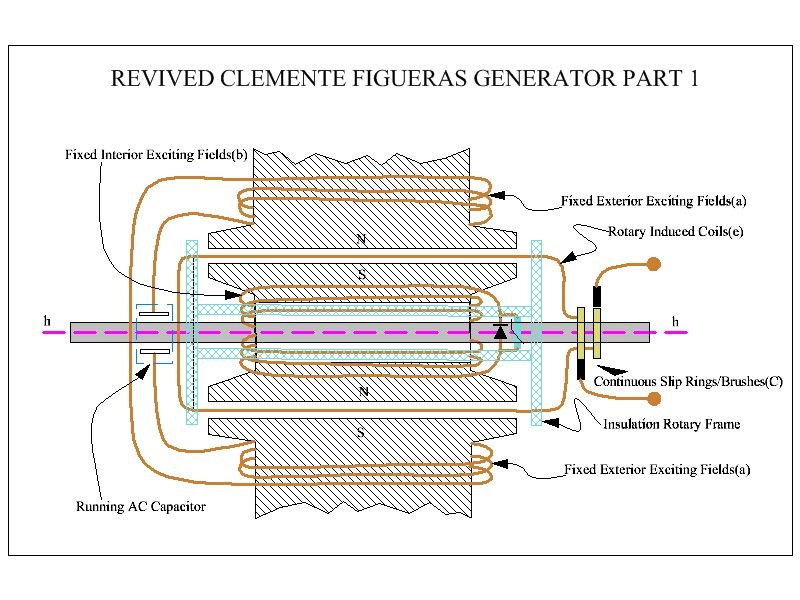



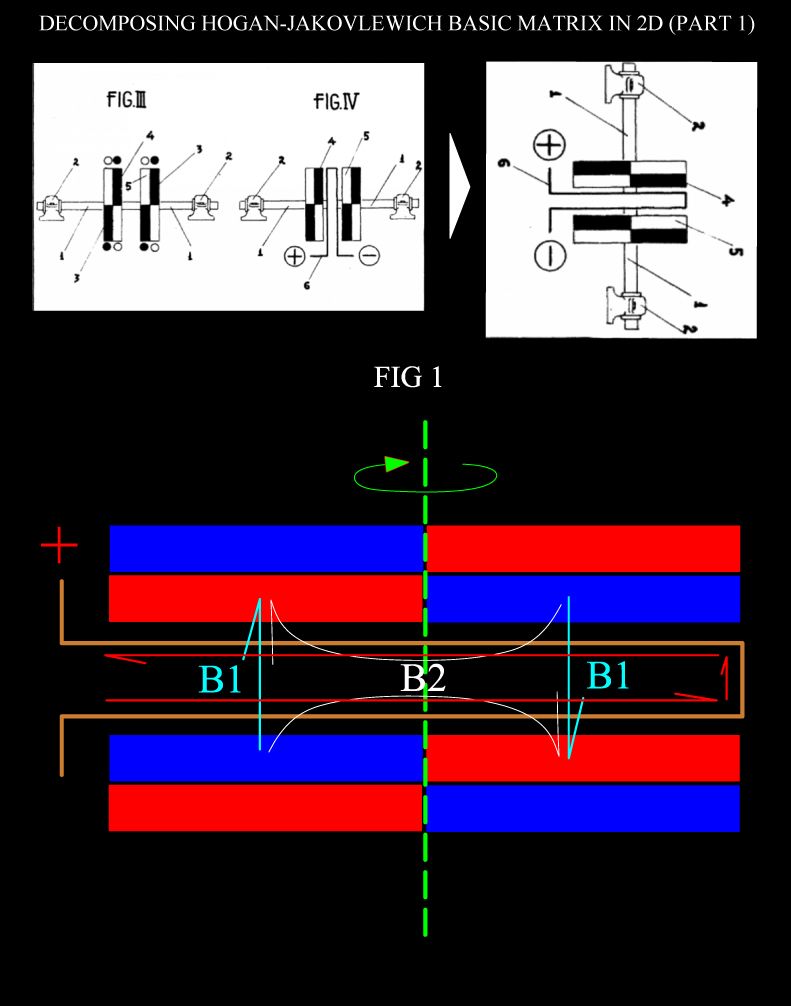
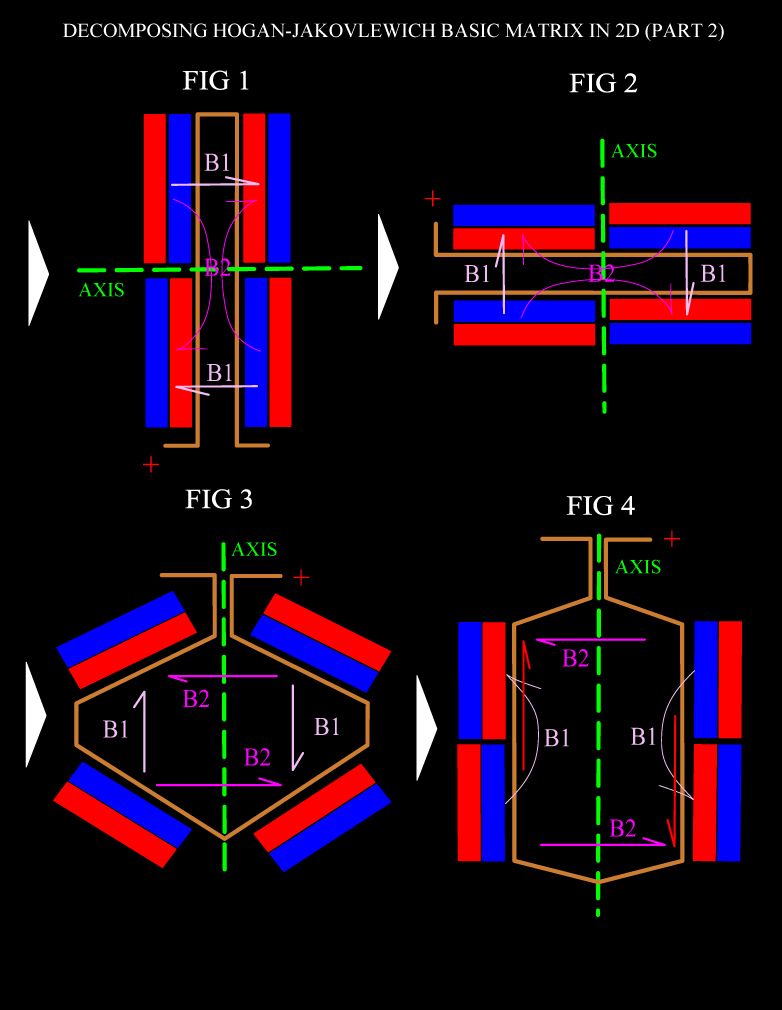
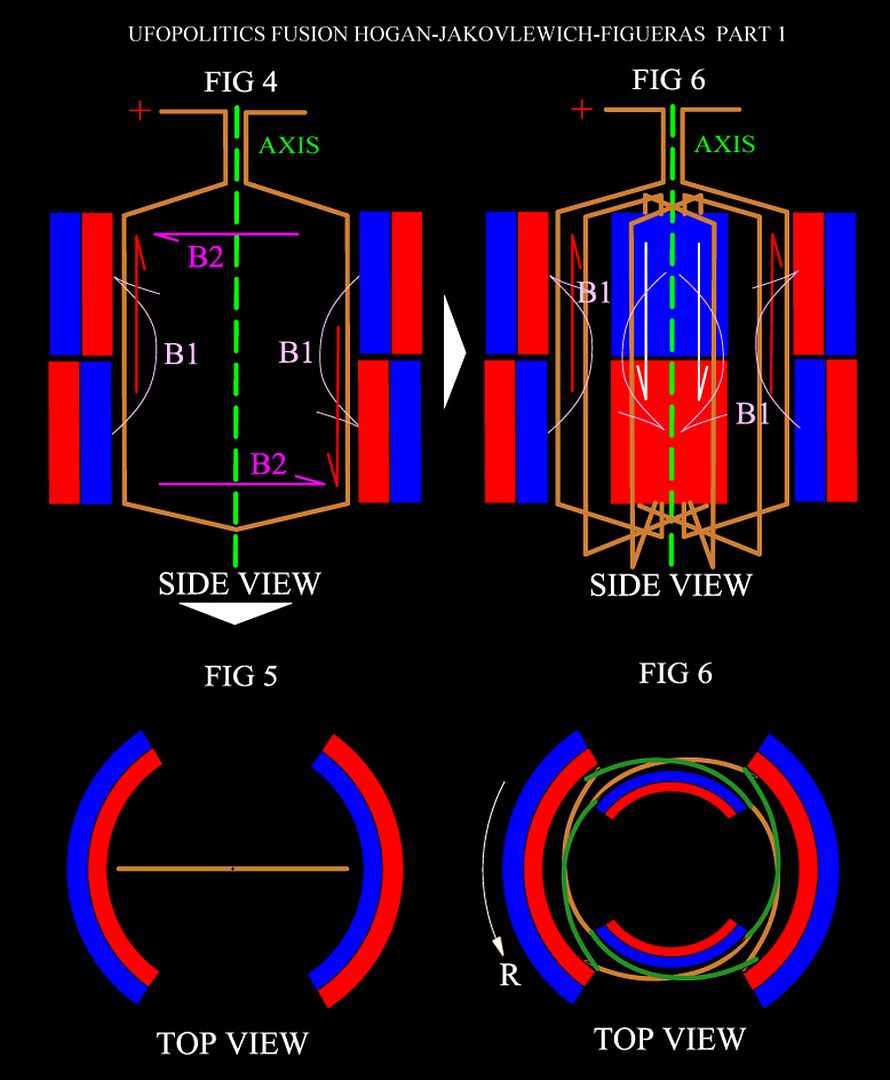
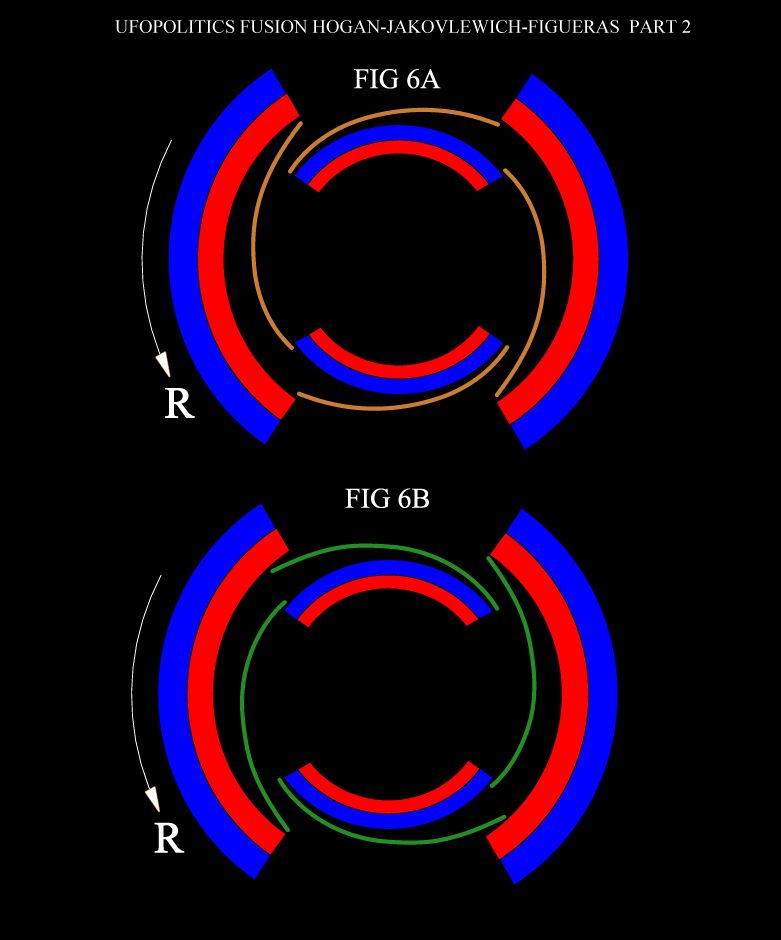
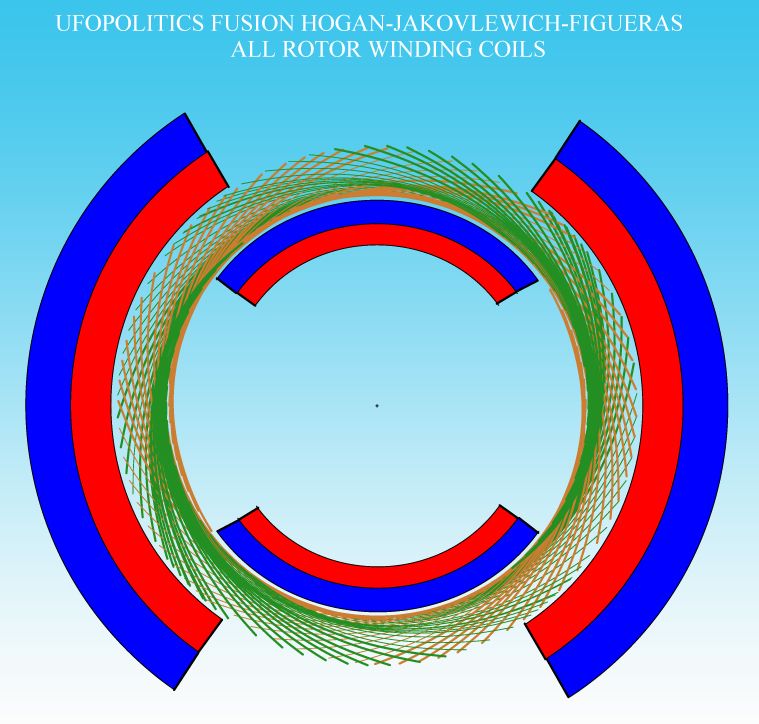


Comment